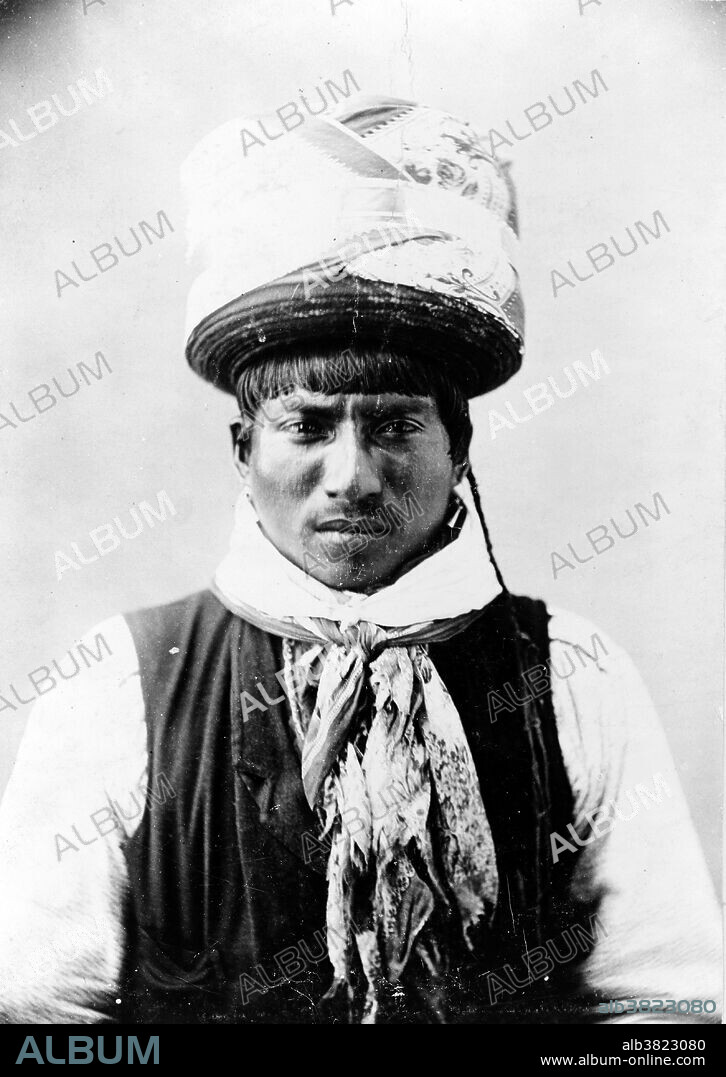alb3823080
Billy Bowlegs, Seminole Indian Chief

|
Add to another lightbox |
|
Add to another lightbox |



Buy this image.
Select the use:

Title:
Billy Bowlegs, Seminole Indian Chief
Caption:
Seminole brave "Billy Bowlegs" photographed by Arthur P. Lewis, 1895. Chief Billy Bowlegs was a leader of the Seminoles in Florida during the Second and Third Seminole Wars against the United States. He was born into a family of hereditary chiefs descended from Cowkeeper of the Oconee tribe of the Seminole. Although Bowlegs signed the Treaty of Payne's Landing of 1832, he refused to leave Florida. He and his band of 200 warriors became some of the most prominent fighters surviving at the time hostilities ended August 14, 1842. Bowlegs and his band lived in relative peace until 1855. A group of army engineers and surveyors invaded his territory in southwestern Florida, where they cut down banana trees and destroyed property. Bowlegs led his warriors in sporadic attacks against settlers for the next few years, in what is known as the Third Seminole War. The Army was unable to subdue his guerrilla warfare. In early 1858, Chief Wild Cat of the Western Seminole was brought back from Indian Territory to convince Bowlegs to relocate voluntarily. The US government offered Bowlegs $10,000 and each of his chiefs $1000 if they did so. After reaching Indian Territory, Bowlegs became a leading chief there. He and his daughters became prominent land holders and slaveowners.
Credit:
Album / LOC/Science Source
Releases:
Model: No - Property: No
Rights questions?
Rights questions?
Image size:
3190 x 4500 px | 41.1 MB
Print size:
27.0 x 38.1 cm | 10.6 x 15.0 in (300 dpi)
Keywords:
1895 • 19TH CENTURY • ALLIGATOR CHIEF • AMERICA • AMERICAN INDIAN • AMERICAN INDIANS • AMERICAN • AMERICAN-INDIAN • ARTFORM: ICON • ARTHUR P. LEWIS • BILLY BOLEK • BILLY BOWLEGS • BW • CELEBRITIES • CELEBRITY • CHIEF • FAMOUS PEOPLE • FAMOUS • FIGURE • FIRST PEOPLE • HALBUTTA MICCO • HALPATTER-MICCO • HALPUDA MIKKO • HISTORIC • HISTORICAL • HISTORY • HOLATA MICCO • ICON • ICONIC • IMPORTANT • INDIAN • INDIANS (AMERICAN) • INDIGENOUS AMERICAN • INDIGENOUS NORTH AMERICAN • INDIGENOUS PEOPLES OF THE AMERICAS • INDIO • LEADER • MALE • MAN • MEN • NATIVE AMERICAN INDIAN • NATIVE AMERICAN • NATIVE AMERICANS • NORTH AMERICAN INDIAN • NOTABLE • OCONEE TRIBE • PEOPLE • PERSON • PERSONALITIES • PERSONALITY • PHOTO • PHOTOGRAPH • SEMINOLE NATION • SEMINOLE • TREATY OF PAYNE'S LANDING • TRIBAL • TRIBE • UNITED STATES • US • USA • WELL-KNOWN
 Pinterest
Pinterest Twitter
Twitter Facebook
Facebook Copy link
Copy link Email
Email
